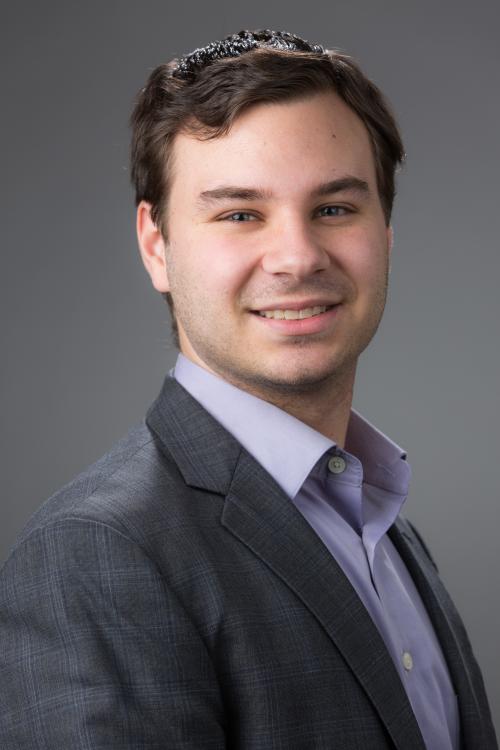Blog
Scaling My Skillset: A Reflection on My First Year as an Engineering Ph.D. Student
Engineers are trained to solve problems. To learn how to solve bigger and more complex problems, we take increasingly difficult courses to enhance our knowledge of mathematics, physics, and chemistry. However, in most classroom settings from middle school through college, problems often come down to a student “solving for x.” It may start out as a simple algebraic equation where you are literally solving for x, but the same pattern can be seen when a student is asked to solve how far a ball travels when thrown or what initial mass of a substance should be used for a specific chemical reaction. Thus, students are first taught to solve for an extant value instead of designing creative or innovative solution to any real problems.
I felt constrained by this educational methodology while I was an undergraduate student, but then I discovered the world of research. Finally, I was able to explore and increase my knowledge about topics that are relatively unknown. For example, I studied the signals transmitted inside the body between the brain and legs to learn how a person adapts to new walking patterns. During a different project, I built a laser optical system to characterize plasma. Although it excited me to work on more open-ended projects, I still yearned for something bigger, something more tangible and long lasting. That’s when I stumbled upon Duke University and its Low Speed Wind Tunnel.
Wind tunnels are a vital piece of aerodynamics experimental research. They can simulate wind at high speeds flowing over airplanes, wings, and spacecraft. But, you may ask, how is it useful if an aircraft cannot fit into this tiny-looking tunnel? In working with the wind tunnel, we use a calculation known as scaling. By making the object of interest (wing, plane, space shuttle) much smaller, and setting the tunnel to run at an equivalently reduced speed, the behavior of the wind on the object is exactly the same. It really intrigues me that I can perform an experiment on a full-size airplane flying at peak altitude by scaling it into the much smaller and slower wind tunnel; with the proper calculations, I could perform research on any sized object!
Months after my initial discovery of the wind tunnel and the opportunities it provides, I am now a full-time researcher and student here at Duke. Although I am excited by the bold and open-ended problem solving I can now pursue, not everything has been smooth sailing. Trading my theoretical approaches for practical methodologies has been a challenge in several ways. For example, because I conduct my research in a place where multiple teams utilize the same equipment, I must carefully schedule my time in order to run my experiments and collect my data without overlapping with other groups. This set-up also requires extra caution in setting up and cleaning up in order to avoid ruining other groups’ research by leaving the equipment messy or broken.
Becoming a graduate student has presented other new challenges, too. I no longer follow an agenda set in detail for me by a supervisor; I am now the supervisor, and I must plan out what steps to give my undergraduate assistants. For example, I tend to utilize my assistant’s experience in CAD designing and simulation to help me produce new research equipment and test rigs. It is important for me to stay on top of long-term project development and goals, anticipating future challenges in order to design work plans for my team. I have accomplished this feat by sending my collaborators papers and training videos on topics we will be encountering next, to help everyone build a solid footing in this new material. Overall, this has been a rewarding experience, as it has allowed me to improve my project scheduling and management skills. I have learned how to supervise different styles of students and try out new skills in setting up meeting times and communicating next steps between us all.
It may seem challenging to pursue a path in research, walking into unknown fields and leaving behind the simple calculations of just “solving for x.” But I feel that it will be worth it in the end. Having my Ph.D. will allow me to help steer the direction of research projects, whether in industry, a laboratory, or at an academic institution. Rather than just solving for some missing parameters on a paper about an aircraft, I could be the one designing and testing an experiment on a scaled aircraft, learning vital pieces of information about the entire vehicle. Although my work currently is limited to a single wind tunnel, one day my toolset could be expanded to something much bigger. Learning some key skills in project management and equipment management are vital to allow me to scale my research up to bigger projects in my career, just as my small aircraft models are scaled up into full-sized airplanes.
Author

Richard Lee Hollenbach III
Ph.D. student, Mechanical Engineering
Ricky is currently a Ph.D. student in the Aeroelasticity Laboratory under the advisement of Dr. Kielb. By performing experimental tests as well as computational simulations, he is trying to understand the unsteady aerodynamics associated with Non-Synchronous Vibrations in Turbomachinery. To improve his knowledge of jet engine compressors and turbines, he completed an internship at Rolls-Royce in the Aeromechanics group during summer 2019.